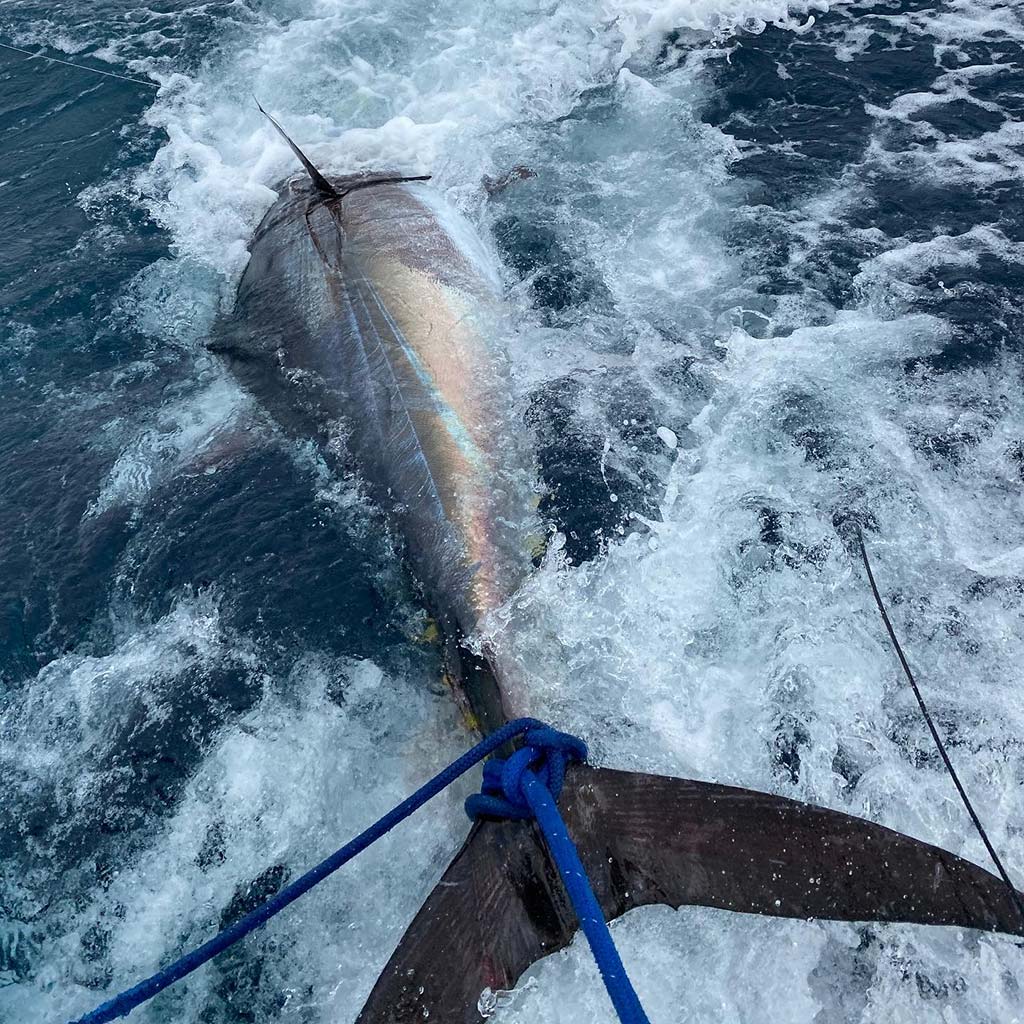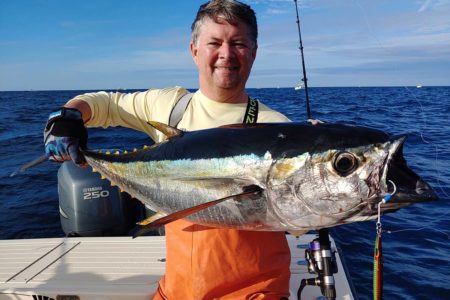Tuna fishing is expensive, taking care of your catch ensures that you will get the most out of your offshore trips.
Preparation, determination, and execution: these are often seen as the most challenging parts in tuna fishing, but for even the most successful anglers, it is what goes on after the fish is landed that is too often overlooked. Caring for your catch is crucial. If you don’t take the necessary steps to preserve the condition of your fish, at best you’ll end up with a defective product; at worst, you will have harvested your fish in vain, wasting it entirely. Luckily for us, the steps to ensure you have the best product possible are relatively simple but seem to be something that not many offshore anglers fully understand, so let’s dive in.
Icing
When it comes to tuna fishing, everybody knows that you are going to need to bring ice, but how much ice should you actually bring? When it comes to this topic, everybody seems to have a different number in mind but believe it or not, you’re actually supposed to have one pound of ice for every pound of fish you plan on keeping. Yes, that is right, and no, you did not read that wrong. That is in a perfect world, and unfortunately, we don’t live in a perfect world, so my advice is that you bring at least a half-pound for every pound of fish you plan to bring home. To be as blunt as possible, bring way more ice than you think you will need because it’s going to go a long way beyond the catch.

Dragging & Bleeding
Dragging is a crucial step of the process which is often neglected. Dragging is when you tail-rope your tuna and drag it behind the boat at a slow pace. This process allows your catch to cool down as they have just fought a hard battle, and their internal temperature has risen well beyond average. After dragging your catch for a little while, you may want to bleed it and continue dragging the fish. Bleeding the fish yields a much better product back at the dock and on the plate. There are many ways to bleed a tune; some people poke arteries while others cut the gills. In the end, it’s your choice but make sure to do it ethically and safely.
Collaring & Packing
Collaring and packing your catch are two more crucial parts of harvesting a tuna that ensure the best possible product. Collaring is a process that involves removing the head and internals of your catch. If the fish’s body does not meet minimum size requirements without the head, you will need to leave it attached. Once you have gutted the fish, you will need to begin packing it. This is where all that ice you brought will come in handy; you will want to fill the body cavity with ice, cooling your prized meat from the inside. Once your tuna is packed, it’s time to put it in the fish box and bury it in more ice. With ice both inside and out, the temperature of your catch will stay nearing freezing resulting in the best possible product when you are back on land.
Filleting
When it comes to filleting your catch, everybody seems to have a different style, but the main premise stays the same. I typically start by making a few cuts in specific locations. I make one cut vertically, a few fins up from the tail, another cut directly down the middle of the fish horizontally, and then cut vertically behind the pectoral fin. Once I’ve made those cuts, I will separate that side into two loins. Once that process is complete, I will remove the skin, cut off any bloody meat and repeat the process on the opposite side. Next, I will divide my loins into meal-sized portions making it easier to separate the catch amongst the other anglers is on my trip.
It may seem like a lot of preparation, and it is. But when you’re dealing with hundreds of pounds of prized tuna that you spent considerable money and time harvesting, you’ll want to be sure that your catch is well cared for. Please take my advice.





